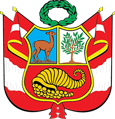Error 404: Page not found
The requested page is not available, maybe it have changed address (URL) or doesn't exist.
Sorry for the inconvenience.
Please check it or try to find the page using the search field.
If you want, you can go to the home page.
| Título |
|---|
|
Lot holds 55 million barrels of light oil reserves Petroperú has launched a call for proposals to f...
|
|
Public Tender No. Petroperú-001-2024-L64
...
|
|
Lot 192: three decades of production
On February 28, 2023, Petroperú and Perupetro signed the ...
|
|
Puerto Maldonado sales plant
Description
Consists of the construction of a Sales Plant, with...
|
|
Transparency portal
General information
...
|
|
Lot 64: facing the future
Another of Petroperú's major activities is the operation of Lot 64, ...
|
|
Lot Z-69
Lot Z-69, located in the continental shelf, in front of the Piura provinces of T...
|
|
Lot VI
Lot VI, located between the Lobitos and Pariñas districts of the province of Talara ...
|
|
Lot I: the beginning
Lot I —located between the La Brea an...
|
|
Representative of the national business sector confirmed progress with the delegation of the Chamber...
|
|
PETROPERU participated in the IX International Seminar on "Exploration, Exploitation, Processing an...
|
|
Conchan Refinery
History
Designed by the Fluor Corporation of Canada, the Conchan Refinery w...
|
|
Iquitos Refinery
History
In the 1950s, the world required the derivates of crude oil in orde...
|
|
New Ilo Terminal
Objective
Installation and Operation of a New Terminal in the city of Ilo t...
|
|
Plants and terminals
List of plants, terminals and airports
Esta...
|
|
Ninacaca sales plant
Description
Consists of the construction of a Supply Plant in Ninacaca-...
|

